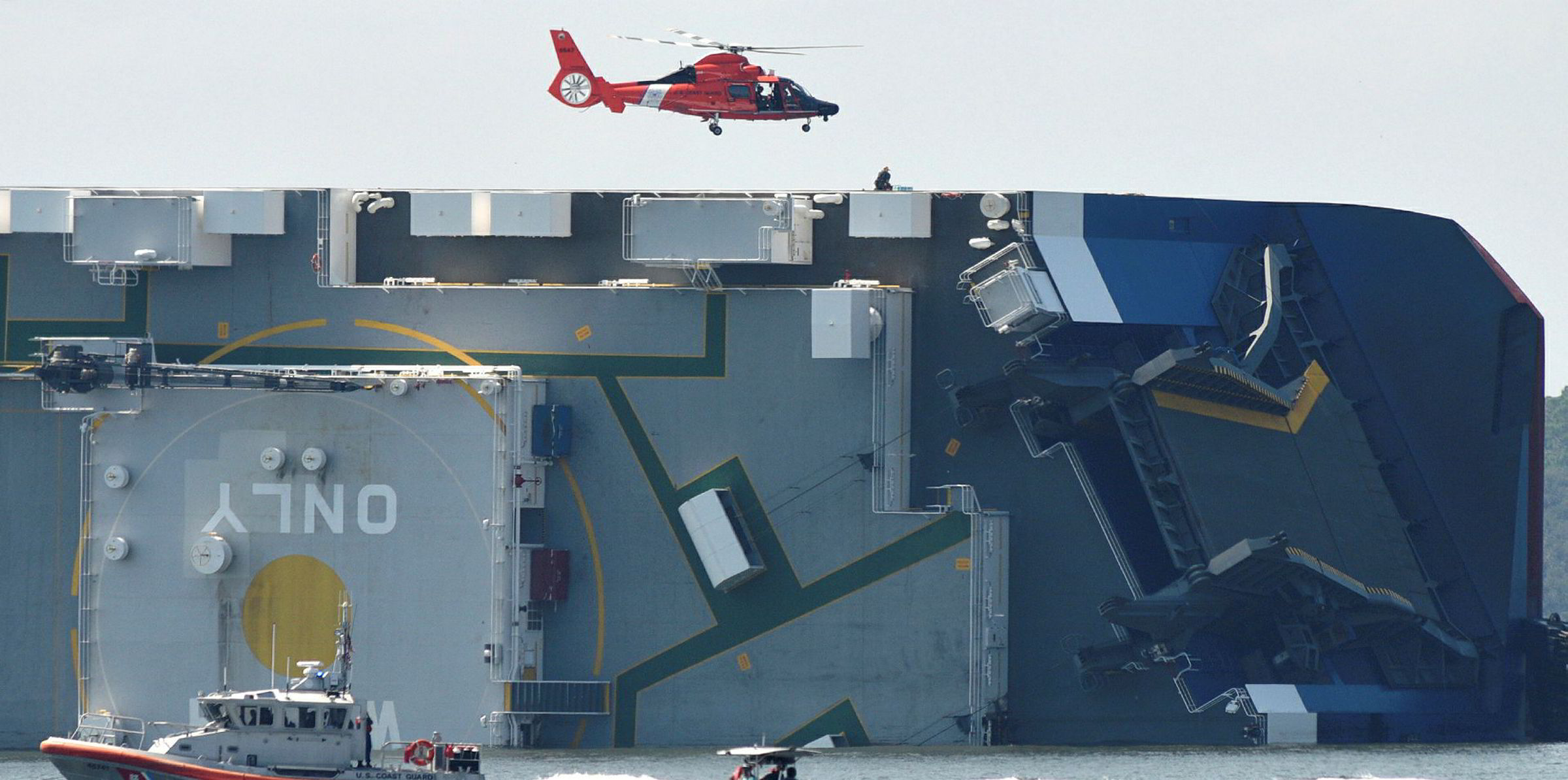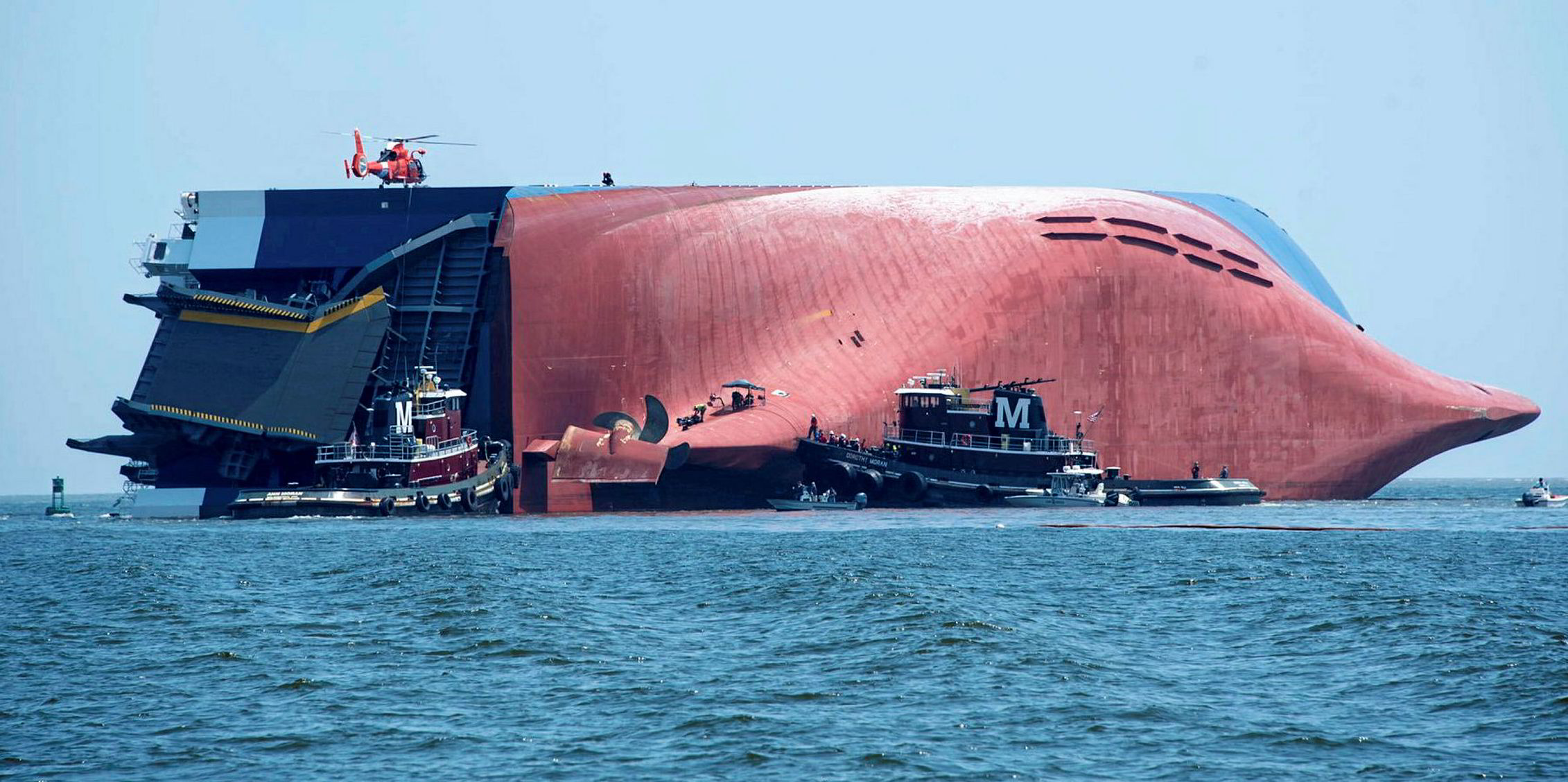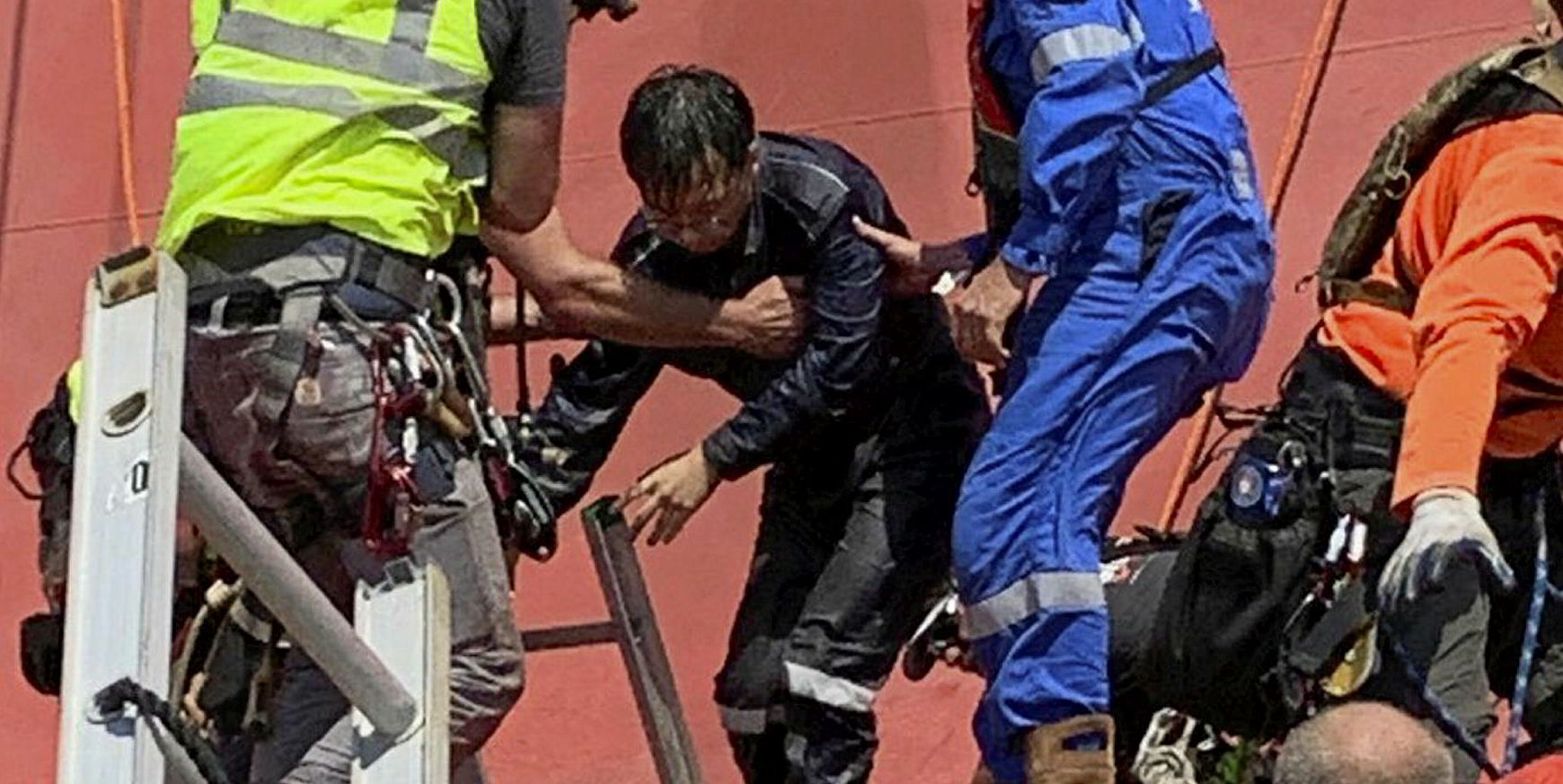Shipowner Hyundai Glovis and its insurers could be hit by most of the $100m-plus in claims expected from a car carrier grounding outside a US port.
Financial liability related to the 7,700-ceu Golden Ray (built 2017) will be decided by an investigation by insurers and the US Coast Guard into the cause of the accident at Brunswick, Georgia, nearly three weeks ago.
Although no one has commented on what caused the ship to capsize, indications are that it was a stability issue caused by a cargo shift or a ballast water management problem. Those possible causes are understood to be the main line of the investigation.
Survey of channels
If a problem with the lashing of cargo or ballast management were found to have caused the accident, it would be a shipowner’s liability.
The alternative causes that would possibly exclude the shipowner from liability are if the vessel hit an uncharted sandbank or object, if it was incorrectly directed by vessel traffic control, or if the port was declared unsafe.
However, there were no reports of a collision.
TradeWinds understands the US Army Corps of Engineers has surveyed the channels around Brunswick port for obstructions in the shipping traffic lane that could have caused the vessel to capsize.
However, with 4,200 cars onboard — around 40% of the ship’s capacity — the more likely suggestion is that the cargo shifted. A cargo shift could have been initiated by poor ballast water management.
The cargo — cars from Kia Motors and other manufacturers, which are almost certain to be write-offs — is valued at upwards of $80m.
Shipowner liability for this would be covered by Hyundai Glovis’ protection and indemnity insurer, North P&I Club, which is also responsible for salvage and pollution-control measures.
Under the Convention on Limitation of Liability for Maritime Claims 1996, the shipowner should be able to significantly limit its financial liability to the claim.
That would leave cargo insurers to pick up the bill for the outstanding amount above the shipowner’s liability. However, there is a possibility that other insurance interests involved could challenge the owner’s right to limit its liability.
The hull of the Golden Ray, valued at an estimated $70m, has not been declared a constructive total loss at this stage.
Indications are that salvor Donjon Marine is preparing to right the vessel using cranes and should be able to save the hull. The operation is expected to take many months.
One issue salvors face is the potential fire hazard from the fuel in the cars’ tanks, which could make damage to the hull worse. There are reports that the Golden Ray suffered a cargo fire before capsizing. Salvors began taking fuel off the vessel this week.







